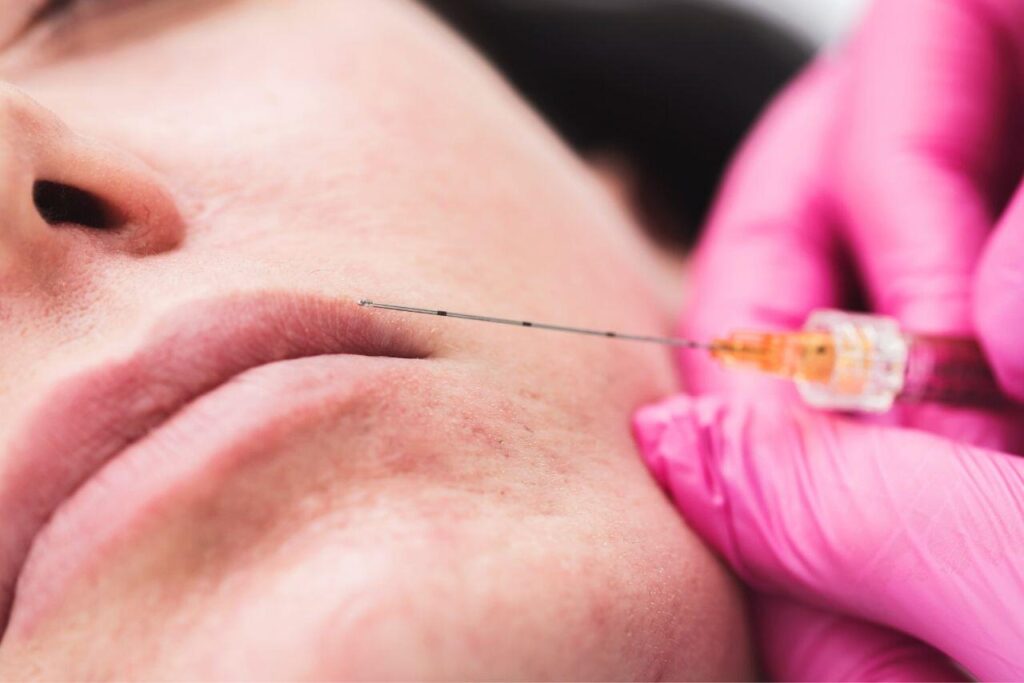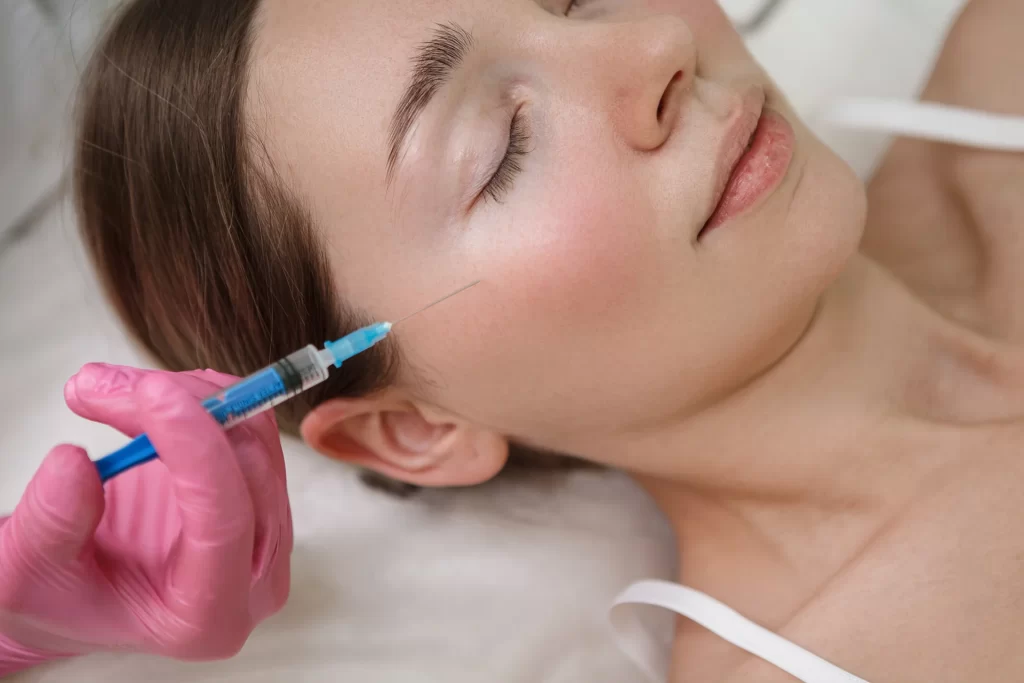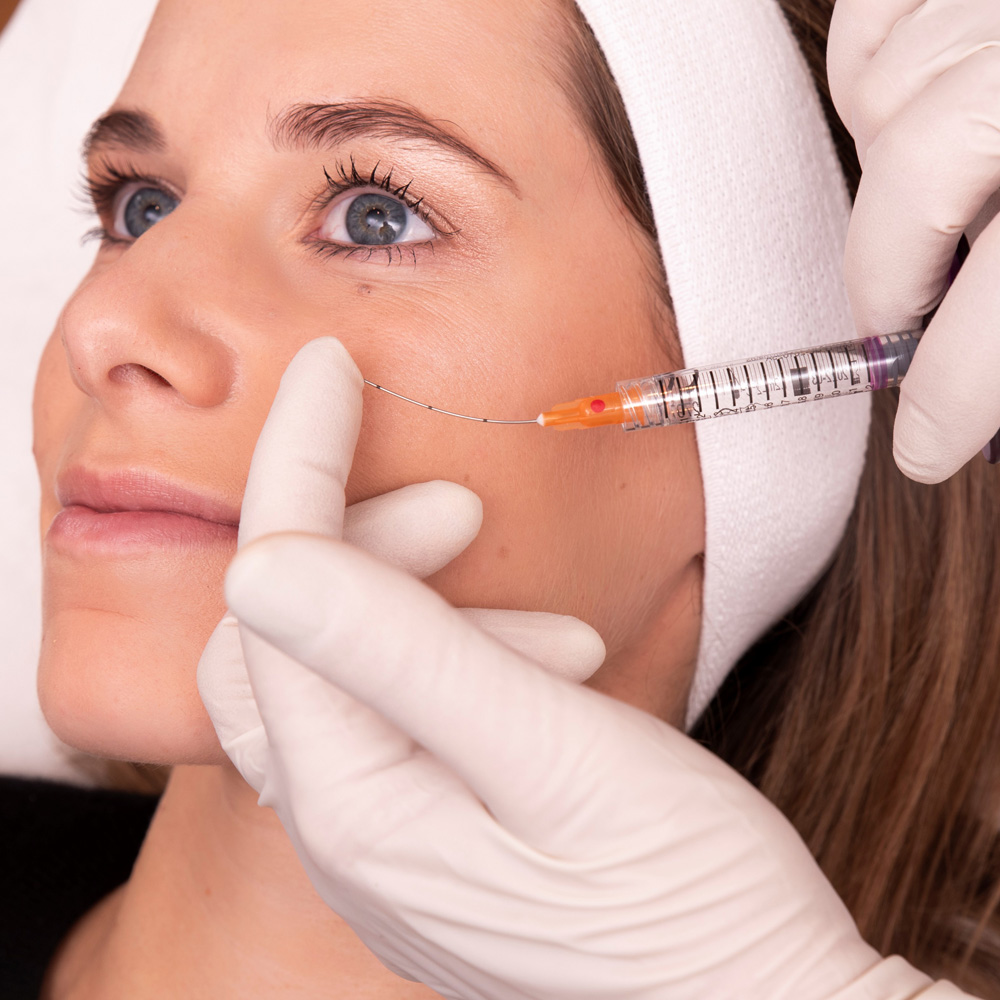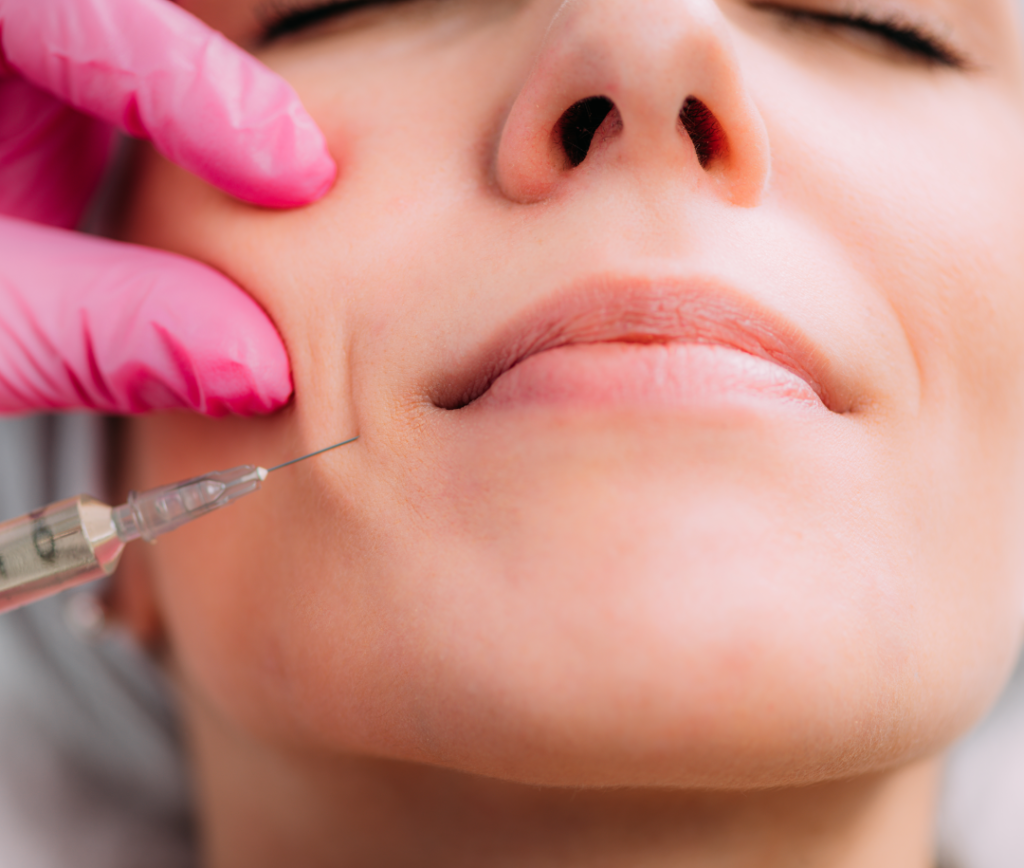
Microcannula
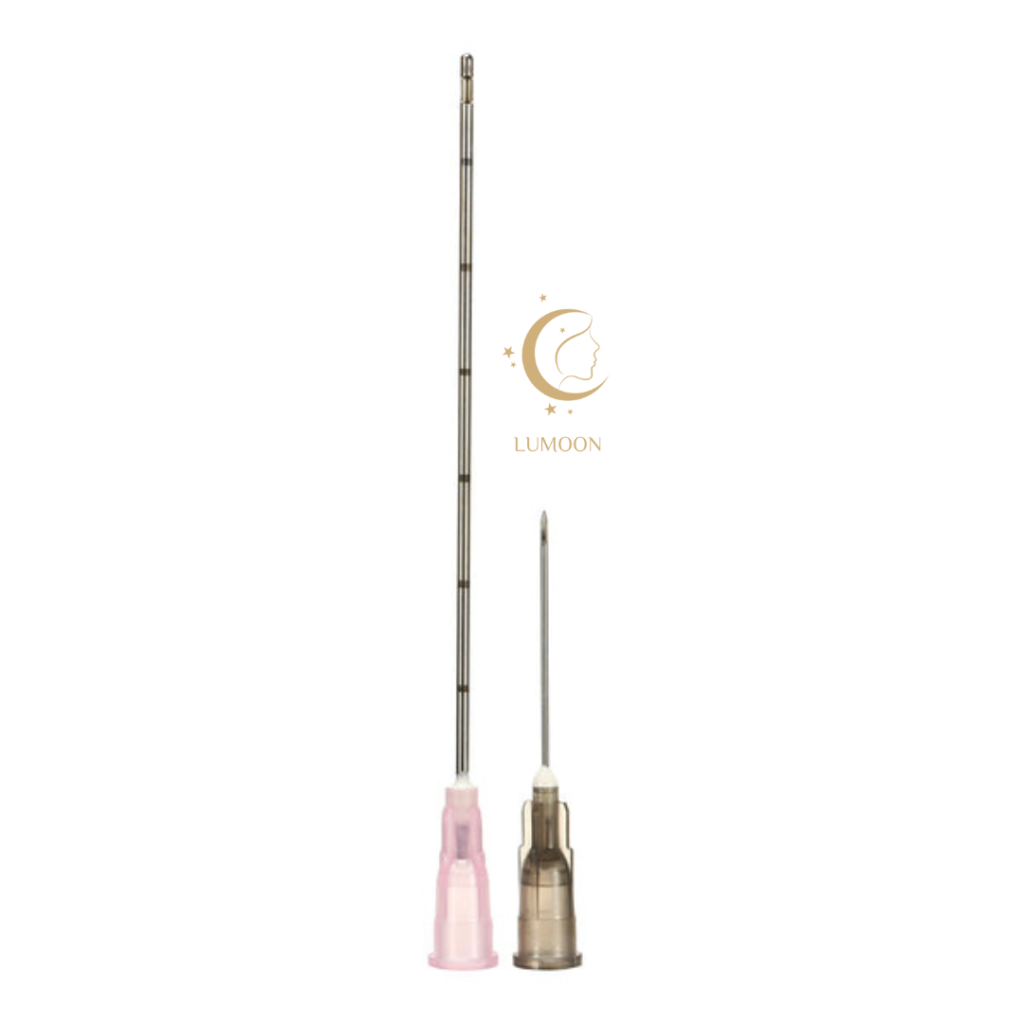
18G
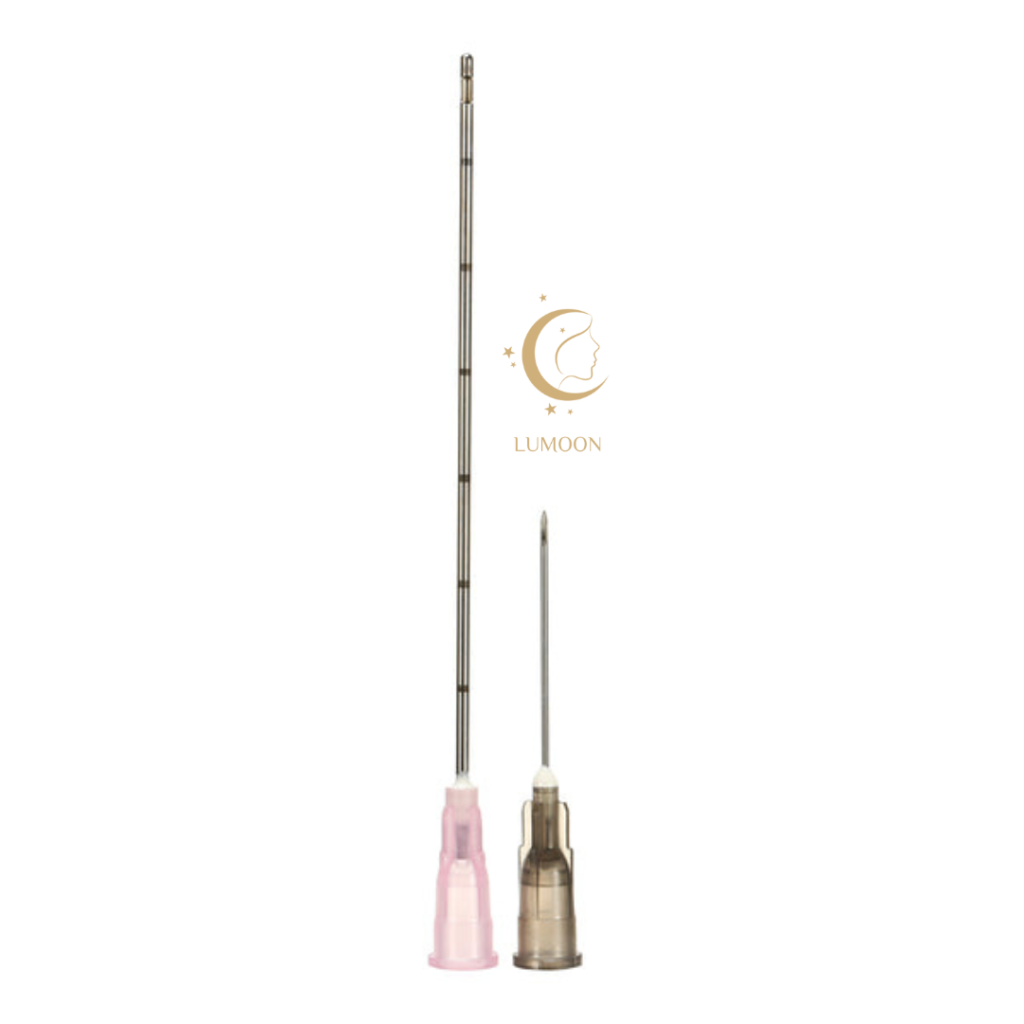
20G
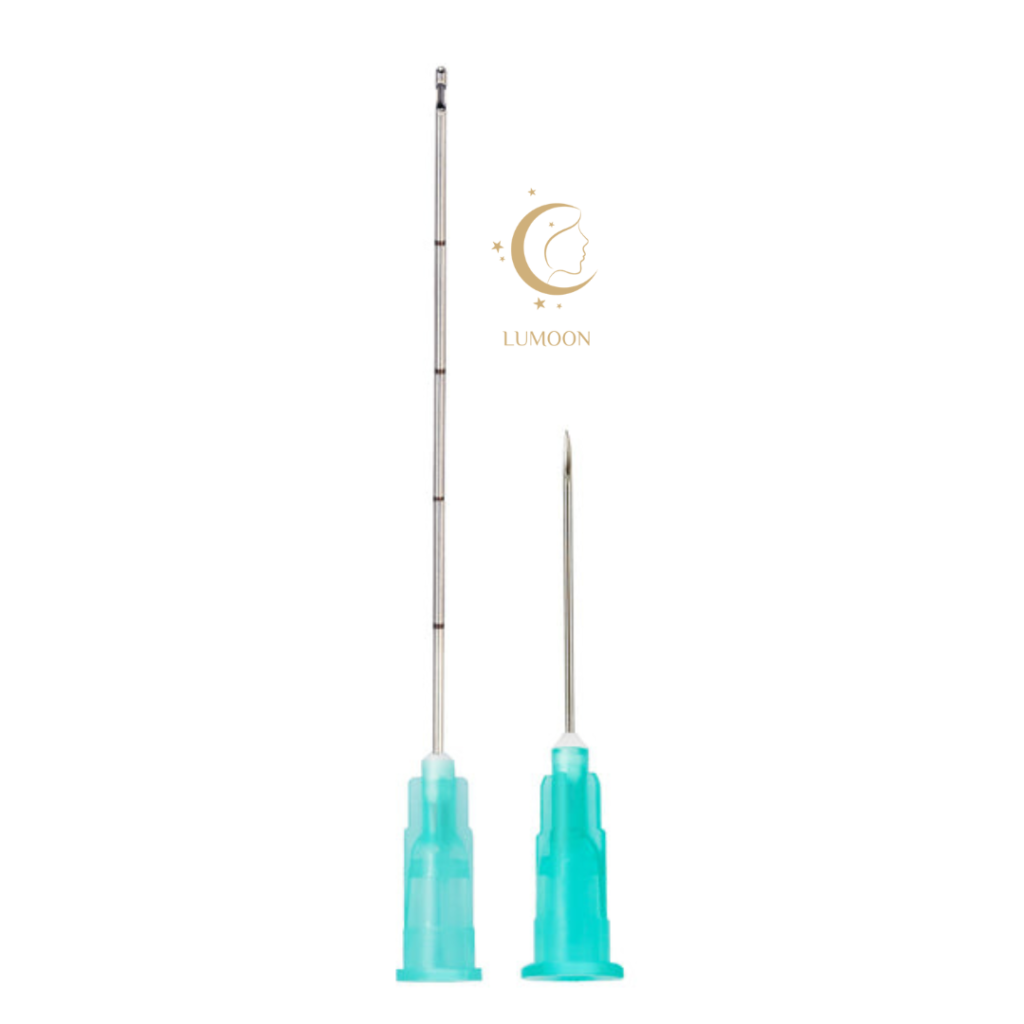
21G
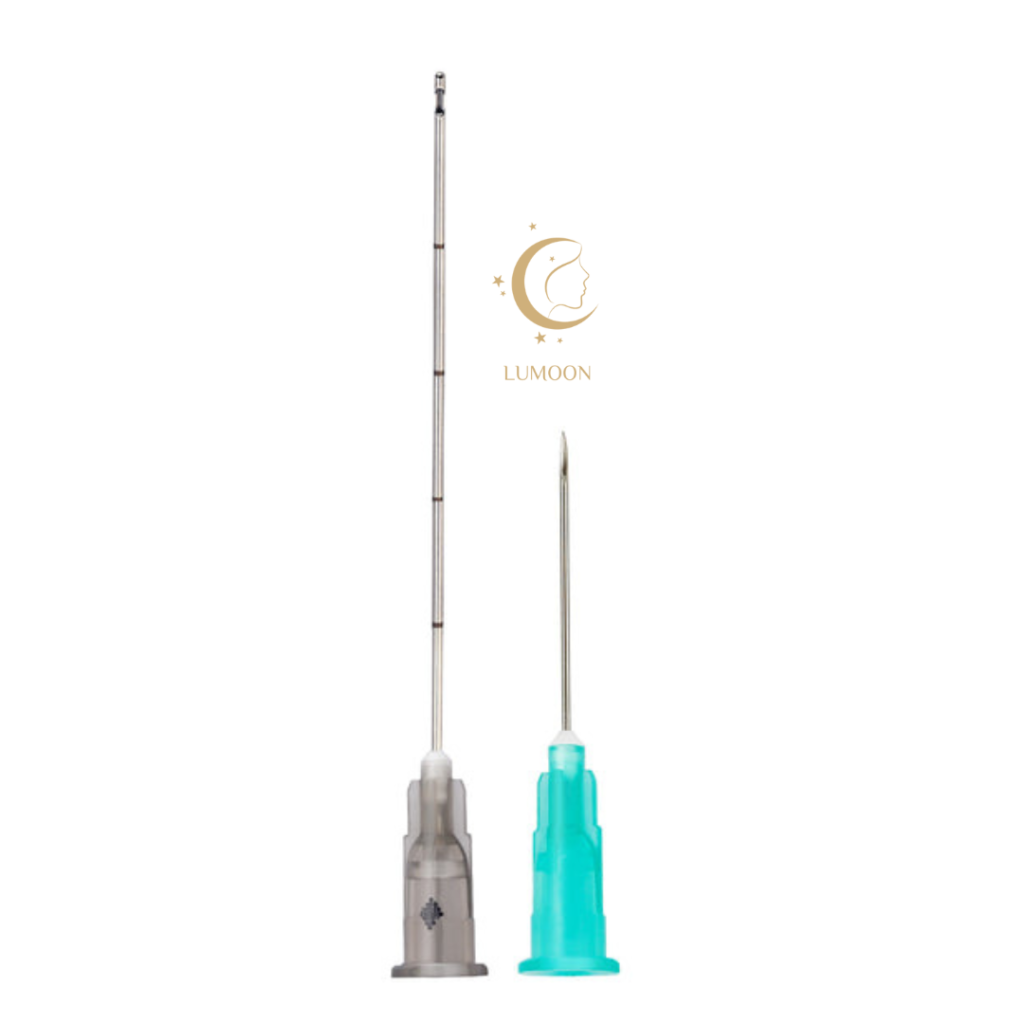
22G

23G

25G

27G
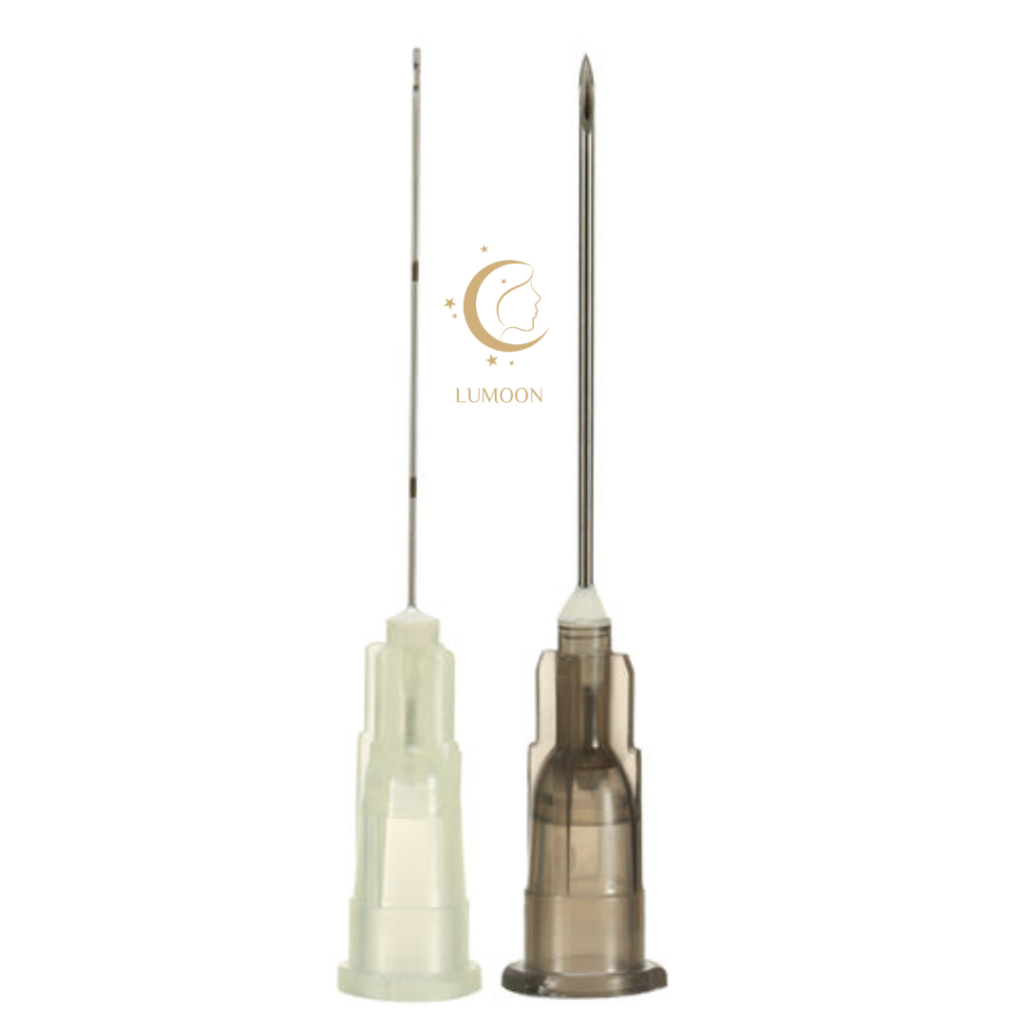
30G

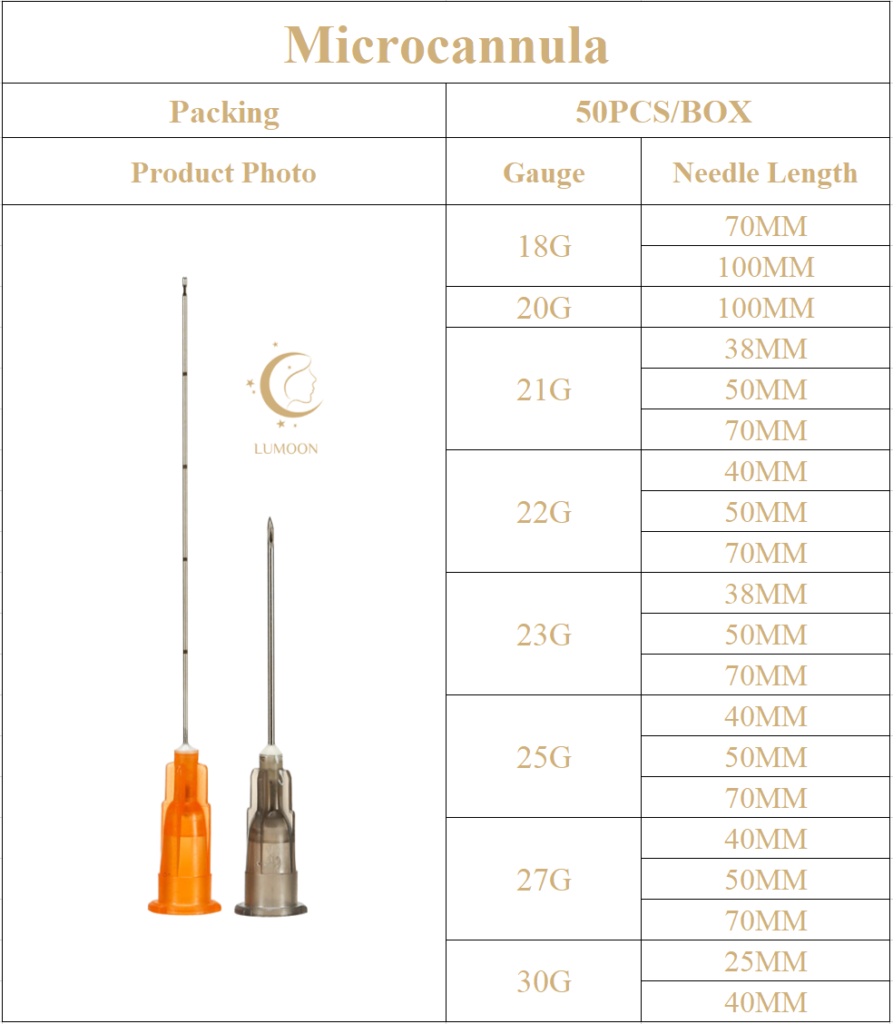
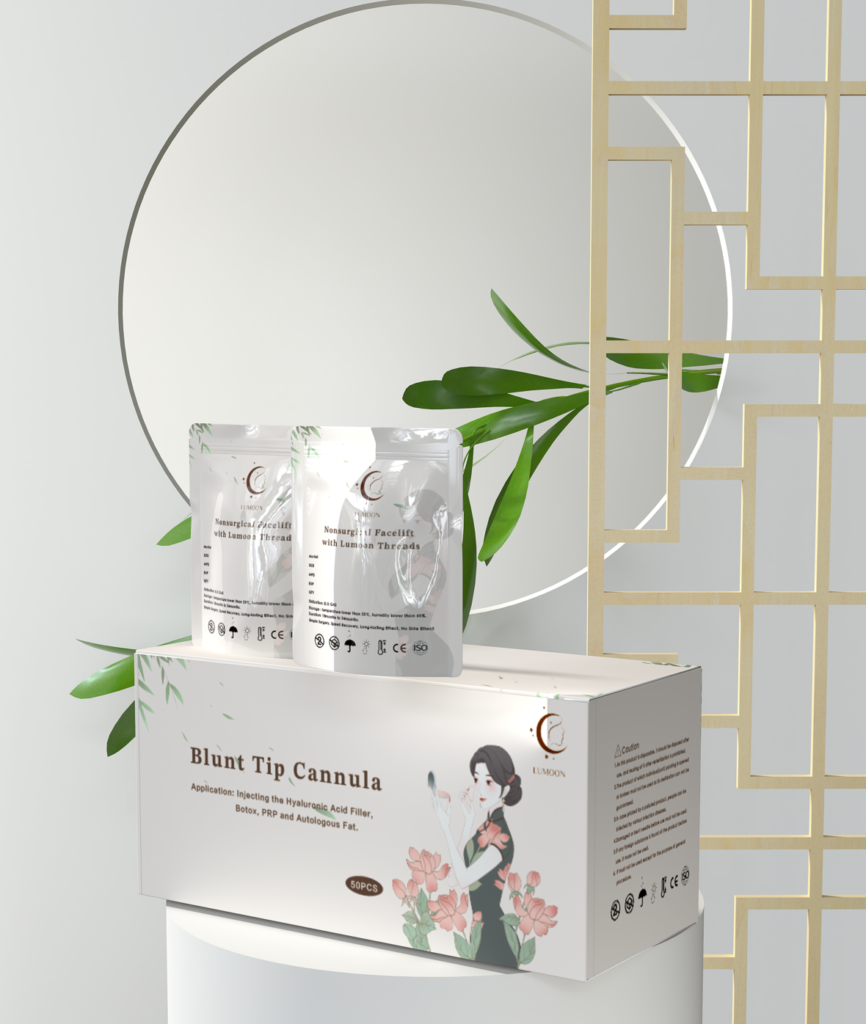

Advantages of Microcannula
- Virtually no bruising
- Lessen pain
- New collagen
- Minimal residence time
- Single point of entry for wider coverage
Size Reference for Using Microcannulas
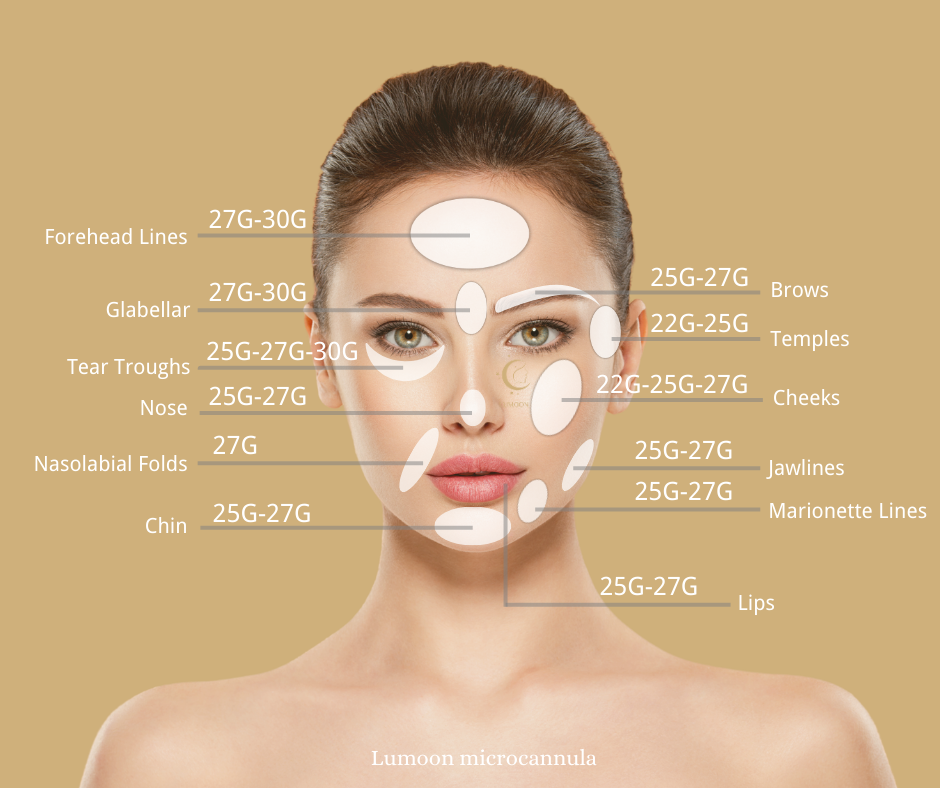
Microcannula has strong elasticity, travels through loose tissues such as subcutaneous and supraperiosteal tissues, and its layers are extremely accurate. It is not easy to penetrate into muscles, and will not directly puncture blood vessels and nerves. The amount of bleeding and swelling can be reduced; it can be used on large areas such as the forehead. With fan-shaped and cross-filling, there are fewer pinholes and it is easier to lay out evenly.
In addition to injections in the face, can microcannulas be used for injections in various parts of the body?
Sure! For example, a 27G or 30G microcannula can be used for injection in the neck, and an 18G microcannula can be used for injection in the buttocks.
4 Tips for Choosing a Microcannula
- Look at the flexibility of the shaft. It needs to be flexible enough to move effortlessly around sensitive structures but have enough rigidity for precise placement of the product.
- Examine the bluntness of the rounded tip. A blunter microcannula has a lower probability of piercing vessels and is therefore safer.
- Notice the distance of the extrusion port or pore from the tip (closer is more precise).
- Know the appropriate size for the specific procedure performed, and match the soft tissue requirements and location. Microcannulas come in various sizes/lengths, and suitable sizes can differ from their sharp needle counterparts.
